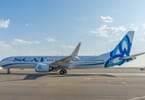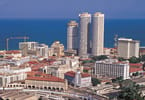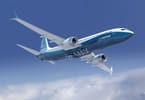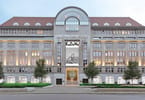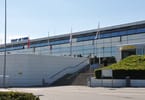LILLE (eTN) – Since its first edition eight years ago, French Connect conference has turned into a major event to meet and talk with most French airports. Debates between airline CEOs, EU representatives, French officials, and airport directors provide an instant image of France’s air transport. Lille, France’s largest metropolis in the northern part of the country played host this week to French Connect.
France’s airports in Europe are unique in many aspects. Compared to other countries in Europe, passenger traffic is highly concentrated in Paris. Over a total of 151.8 million passengers traveled through French airports in 2010; both Paris Charles de Gaulle and Orly airports had a market share of 55.2%, the equivalent of 83.3 million passengers. France’s second airport in Nice has traffic volume that is 8.6 times smaller than both Paris airports (9.6 million passengers). The gap between the first and the second airport is the largest of any big EU country. In the UK, Manchester volume of passenger is “only” 7.2 times smaller than the 5 airports serving the London metropolitan area. In Germany, Munich airport’s total passenger volume is only 1.5 times smaller than its counterpart in Frankfurt.
Another worrying element is the relatively slow growth of French airport traffic: total passenger output was up last year only by 1.3% compared to a growth of 7% in Italy, 4.7% in Germany, and 2.7% in Spain. The UK was the only big European country to experience a drop in passengers last year. And while France (excluding overseas territories) recorded 15 airports with traffic of over 1 million passengers annually, this figure reached 19 in Germany, 21 in the UK, and 23 in both Italy and Spain.
Slow growth in France has been hampered by the rapid development of high-speed train networks, the relatively high costs of production for air transport, and the lack of domestic competition with only a single national carrier, Air France, having almost a virtual monopoly on most routes. France has also this unique position of having one big national carrier, while Spain, Germany, and the UK offer a large choice of local carriers. According to data from OAG, French airlines have generally a share of less than 50% on most intra-European routes.
Air France has for years been playing the strategy of building a powerful gateway and hub at Paris CDG airport. Today, Paris CDG is Europe’s largest hub in terms of offered connections while Lyon was designated as a regional hub for Europe a few years ago. “But Air France is every year slashing capacities out of Lyon, and I am not sure how long the Lyon hub will still be around,” explained one of Lyon airports’ directors. Many provincial airports feel indeed ‘abandoned’ by Air France and have then [been] looking at other European carriers to fill up the gap. Over the last few years, low-cost airlines have then systematically built up their presence in France. With the exception of Paris CDG or Strasbourg, the share of low-cost airlines in total passenger traffic now stands on average at 22%, closer to the European average.
It does not come as a surprise that most of the new routes opened last year came from low-cost carriers. According to the Anna.aero website, from 171 new routes involving 36 airports, 88 carried the mark of Europe’s two leading low-cost carriers, Easyjet and Ryanair, equivalent to a market share of 51%. While Ryanair decided to close its base in Marseilles due to legal restrictions, the Irish carrier will still maintain over the summer a large activity at the southern airport. Easyjet is strengthening its network in Lyon and Bordeaux while Spanish Vueling just announced it will set up a new base in Toulouse with 8 destinations at the end of the year. “As legacy carriers lose money on short-haul, point-to-point routes, there is a trend to see budget carriers or semi-low-cost airlines taking over those routes,” explained Alex Cruz, head of Vueling.
As low-cost carriers expanded in France, national carrier Air France almost vanished from the regional map of provincial airports. But changes are finally in the air. Air France’s management now recognizes the need to re-conquest the French public in regions with a new product. The airline is working on a new structure with the launch of subsidiaries in four cities (Bordeaux, Marseille, Nice, and Toulouse). “It will be a simplified product with competitive pricing designated for point-to-point routes on domestic and European routes,” told Claude Malacan, Vice President of Network Planning for Air France. An announcement about the future network is soon to be made by management.
WHAT TO TAKE AWAY FROM THIS ARTICLE:
- Slow growth in France has been hampered by the rapid development of high-speed train networks, the relatively high costs of production for air transport, and the lack of domestic competition with only a single national carrier, Air France, having almost a virtual monopoly on most routes.
- Easyjet is strengthening its network in Lyon and Bordeaux while Spanish Vueling just announced it will set up a new base in Toulouse with 8 destinations at the end of the year.
- With the exception of Paris CDG or Strasbourg, the share of low-cost airlines in total passenger traffic now stands on average at 22%, closer to the European average.







